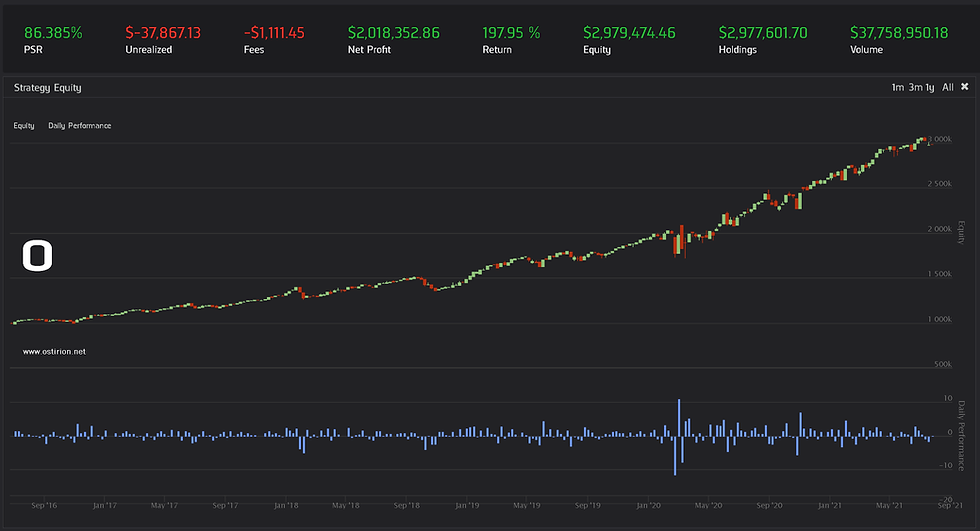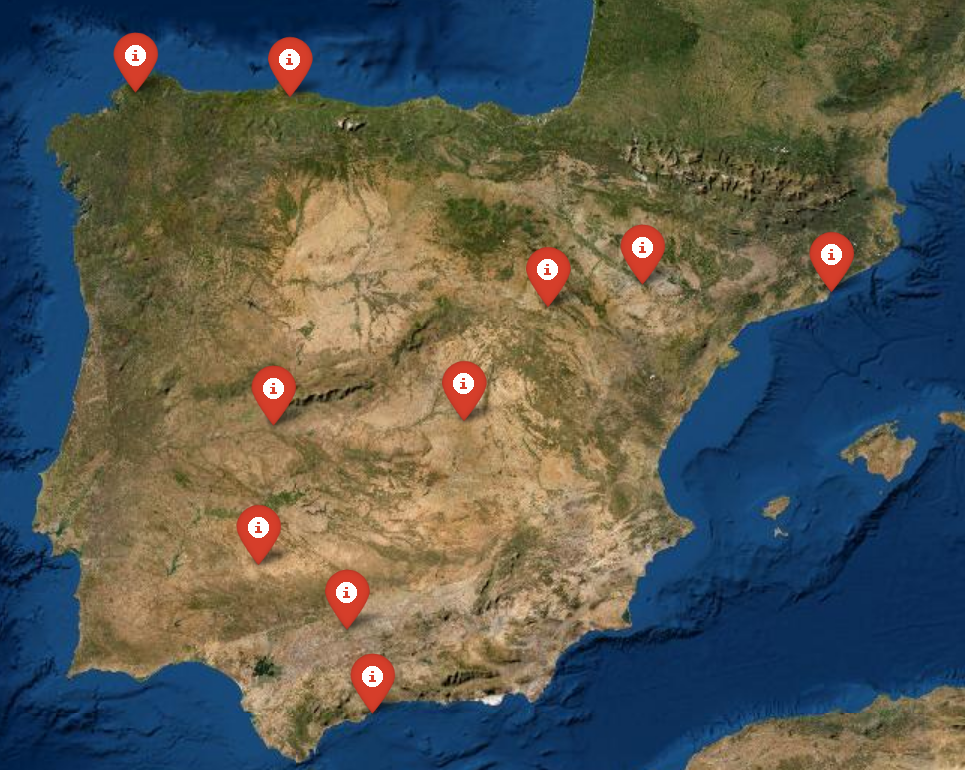2020: A Year in Perspective
- H-Barrio

- Dec 29, 2020
- 6 min read
From the traditional investor's point of view 2020 has been a wild ride. Any passive or buy and hold strategy went through heart-shrinking drops during the year as the confused and confusing coronavirus news came and went. It is apparent now that the activity restrictions, at the global scale, have had varying impact in the markets overall. The critical point in terms of volatility appeared somewhere between February and April, when the spread velocity and severity of the virus was uncertain and lockdowns were happening in the major world economies:

The detail of the sharpest of falls is from mid February until the last week of April, when the shaky and difficult to predict recovery happens:

Protection of assets during this time was difficult, a well diversified portfolio would have lessened the drops and even provided opportunities for large gains, using TLT ETF as a proxy for the behaviour of bonds during this time the following shape can be observed:

The volatility in bonds was extreme, the behaviour was in general anticorrelated to the market with some exceptions that generated a panic as all trades seemed to be the same trade and historical similarities to Great Depression era predicted a very long economic downturn. This economic downturn is still looming today, at the gates of 2021, it seems on the other hand that vaccine hopes and the recovery aids to certain sectors will generate an overshooting recovery. This is the standardized SPY to TLT price variation during the year, that gets us to the start of 2021:

And the zoom into the "March of Madness", when the situation was the most volatile:

How did the VIX behave during the year? Was it of any use to predict the market downturn? It is apparent that the market forces as a whole were totally fractured and both bull and bears equally pushed prices as the options action was not clear at all, so that VIX peaks at the SPY bottom (or one day before, for the matter), which is a little bit late, does not provide enough early warning to trade the market correctly and possibly reflects some ill-timed options getting written under duress:

VIX even mocked traders with a very stable first week of March just before the bottom. We here at Ostirion had at that time no model or reference to handle this and all the risk control measures were activated causing almost 60 days of no-trade until June. March and April were, in our opinion, impossible to trade properly under previously unseen volatility values, historic tops:

Looking at the sectorial behaviour using "X" series ETFs as proxies (and IGE, North American natural resources as a guest of honor), the horrendous contraction of the expected output of US economy is evident, along with the year end recovery:

The final year-to-year picture, using normalized returns for ranking purposes is this:

Venturing an interpretation: technology and communications have acted as counters to the pandemic lockdowns and mobility restrictions worldwide. Demands for on-location hardware, transportation and financing has been limited, for the latter accumulating probably high risk business debt that may spill over into 2021. We risk being called back to 2001 by saying this: technology will save us this time. And possibly technology will keep on saving us 2021 leading growth while the rest of the sectors just recover and others, real estate among them, may dwindle. This leads to another question: how did the counterparties to the technification of the lockdowns fare? How did transportation and real state do?

Transportation (IYT) recovered a little bit, real estate (using VNQ) did not. And this may be the trend for 2021, more consumers may be willing to travel on leisure filling business vacant seats than residential customers willing to fill office or retail space that may be, in the face of overwhelming technology, left unoccupied forever. This could be valid even in the absence of virus, lockdowns or restrictions in a forced (or welcome depending on demographics) telework adoption to a massive scale that is probably overdue (technically speaking).
Precious metals had also a shaky ride in 2020:

Metals suffered the same fate as stocks during the worst part of the year and managed to recover similarly. Note that, in relative terms, silver gained into gold and platinum even if during the high uncertainty period gold spiked in relation:

This time we believe that 2021 will continue to drop the gold to silver ratio from the current approximate of 70 while both increase in value as fears of inflation resurface through global state-sponsored relief efforts that may help some struggling businesses in the best case and will probably increase the rate of inflation, or cause fear of. This is extensive to almost all fiat currencies, challenged now in earnest by cryptocurrencies that saw a little bit of an explosion in the latest quarter of the year:

Both crypto volume leaders Bitcoin (BTC) and Ethereum (ETH) surged relative to the value of the Euro (Euro as proxy of fiat money, being quintessential fiat) in what appears to be a run for new levels. The fundamentals are still very unclear even if major financial payment systems announced their willingness to use crypto in their transactions. This climb to the next plateau may continue well into 2021, we dare not venture the target price. We will venture that it ends in a sharp reversal to higher lows after the sensible level is reached. Innovative national monetary policies may push this through all 2021 even and this will be a trial by fire for crypto if monetary purchasing parity is lost and they manage to store value safely, that is, not causing heart attacks. Crypto did cause these heart attacks during the worst of 2020, so we sentence them still as of no practical hedging use, although rising in the ranks and making themselves very amenable guests.
This has been the year then: no travel, no restaurants and no offices. This is a trend for offices only, travel and restaurants are "desirable" as office space is made "not desirable" by technology. Technology and communications generated value while crossing abrupt terrain, they will continue to do so, and accelerate if artificial intelligence is massively applied in COVID related topics and spills over to other economic areas. Economic areas that then benefit from increased workforce efficiency (layoffs in barbaric languages) and can reduce their real estate footprint in turn.
With this year ending, this is how typical portfolio holdings performed, starting with a balanced 40% SPY-60% TLT as a safe benchmark:

A healthy 19% return, a sharpe ratio of 1 more or less and a maximum 18% drawdown that could be more than many investor could digest before pulling out. Given the bleakness of the year, the simplest of the strategies has held its ground. More diversification in the form of equally weighted stock, bonds, metals and crypto brings this:

A sacrifice of returns down to 15% for a better risk-reward ratio and a drawdown of just 10% that starts to be acceptable for most investors. Any long holding strategy, unless very well informed, will result in bad performance during the February to March period, even modest positive returns are the product of extreme volatilities paid at a high risk price. If we were looking for smooth, constant returns the start of 2020 was not a good time to find them.
A technology and telecom overloaded (double weight) sectorial portfolio would have performed thus:

Which increases the returns at the cost of risk. 28% returns for 2020 could be considered good, that 31% drawdown is still spectacular for technology and telecom.
More advanced sectorial, bonds, cryptocurrencies and metal holdings could have weathered the worst of the COVID better, the never-seen-before volatiles will not go away whatever we did in March. Some financial and investment advisories made money, the vast majority lost money or underperformed and some others, concentrated in quantitative methods just decided not to trade, reduce risk and keep cash, in part because their models blew up and their computers caught fire.
While the dust settles today sectors have been razed to the ground, especially worrisome is, for us in Spain the hit to the restaurant and bar sector that affects the very basic cultural behaviors that fuel the economy and defines society, not to mention the lack of tourism that will steal a large chunk of production from not only Spain but all popular destinations.
Winners have been remote work enablers, cloud computing based companies and all productive operations that have reduced their dependency on the human factor and even reduced human contact. For a large sector of the population this is, and will be, a hard to swallow pill.
2021 has a cyberpunk vibe to it, lockdowns, the medical-industrial complex replacing the military one, preventative media campaigns to ensure that a rushed vaccine is totally safe, excusatio non petita and Boeing 737 Max almost forgotten, robots and teleconferences. The future is being released hurriedly, is buggy and the overdue promises of a decade (3D printing, Virtual Reality, Strong AI, among others) may start to get fulfilled in earnest now. Not everyone will like it and technology gaps will widen.
We wish you a 2021, as in wishing a full year, for both good and bad.
Remember that information in ostirion.net does not constitute financial advice. Ostirion holds positions in gold, silver and Bitcoin in the moment of publication. If you are in need of algorithmic model development, deployment, verification or validation do not hesitate and contact us. We will be also glad to help you with your predictive machine learning or artificial intelligence challenges and concerns in 2021.



Comments